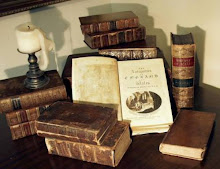First we found open one of the local shops that had been closed every other time we passed by. It was inside one of the huge log buildings built by the Russians. Each timber measured about eighteen inches across, notched at the ends, and stacked horizontally. Most of the exterior of the building is covered with modern siding, but inside this store, and on the outside behind plexiglass, the original logs can be seen.
 The Russian bishop's house is a similarly-constructed log building. Here there are even more insights into the method of building. Spaces between the ceilings and upper floors was filled with sawdust for insulation. Floors likewise had dead space above the foundation for insulation. Walls and ceilings were covered with cloth and painted. The stove walls were constructed with brick to radiate the heat to other rooms. A few spots on the walls show the writing of former students who were bored with their lessons. Another large model reconstruction shows Sitka in Russian times. The guided tour of the upper floors cost four dollars. We skipped it and were satisfied by the displays offered on the ground floor for free.
The Russian bishop's house is a similarly-constructed log building. Here there are even more insights into the method of building. Spaces between the ceilings and upper floors was filled with sawdust for insulation. Floors likewise had dead space above the foundation for insulation. Walls and ceilings were covered with cloth and painted. The stove walls were constructed with brick to radiate the heat to other rooms. A few spots on the walls show the writing of former students who were bored with their lessons. Another large model reconstruction shows Sitka in Russian times. The guided tour of the upper floors cost four dollars. We skipped it and were satisfied by the displays offered on the ground floor for free. We also visited another Russian landmark that charged a two dollar entrance fee. St. Michael's cathedral in the center of town is a reconstruction based on the original which burned in a fire in 1966. Inside are numerous icons on the wall. While we were there, a small service was taking place on the right side of the cathedral. Very little of the cathedral was open to visitors. One could also purchase candles inside, to light and place inside in veneration. Odd that this place of Christian worship should be collecting money, when Jesus tossed the moneychangers out of the temple. The iconography also is interesting, but makes the Orthodox worship seem a little comical or cut-and-paste, more artistic than holy. The example below is not a flat panel, but an image enhanced with surrounding elaborate multi-dimensional metalwork known as rizas.
We also visited another Russian landmark that charged a two dollar entrance fee. St. Michael's cathedral in the center of town is a reconstruction based on the original which burned in a fire in 1966. Inside are numerous icons on the wall. While we were there, a small service was taking place on the right side of the cathedral. Very little of the cathedral was open to visitors. One could also purchase candles inside, to light and place inside in veneration. Odd that this place of Christian worship should be collecting money, when Jesus tossed the moneychangers out of the temple. The iconography also is interesting, but makes the Orthodox worship seem a little comical or cut-and-paste, more artistic than holy. The example below is not a flat panel, but an image enhanced with surrounding elaborate multi-dimensional metalwork known as rizas.


No comments:
Post a Comment